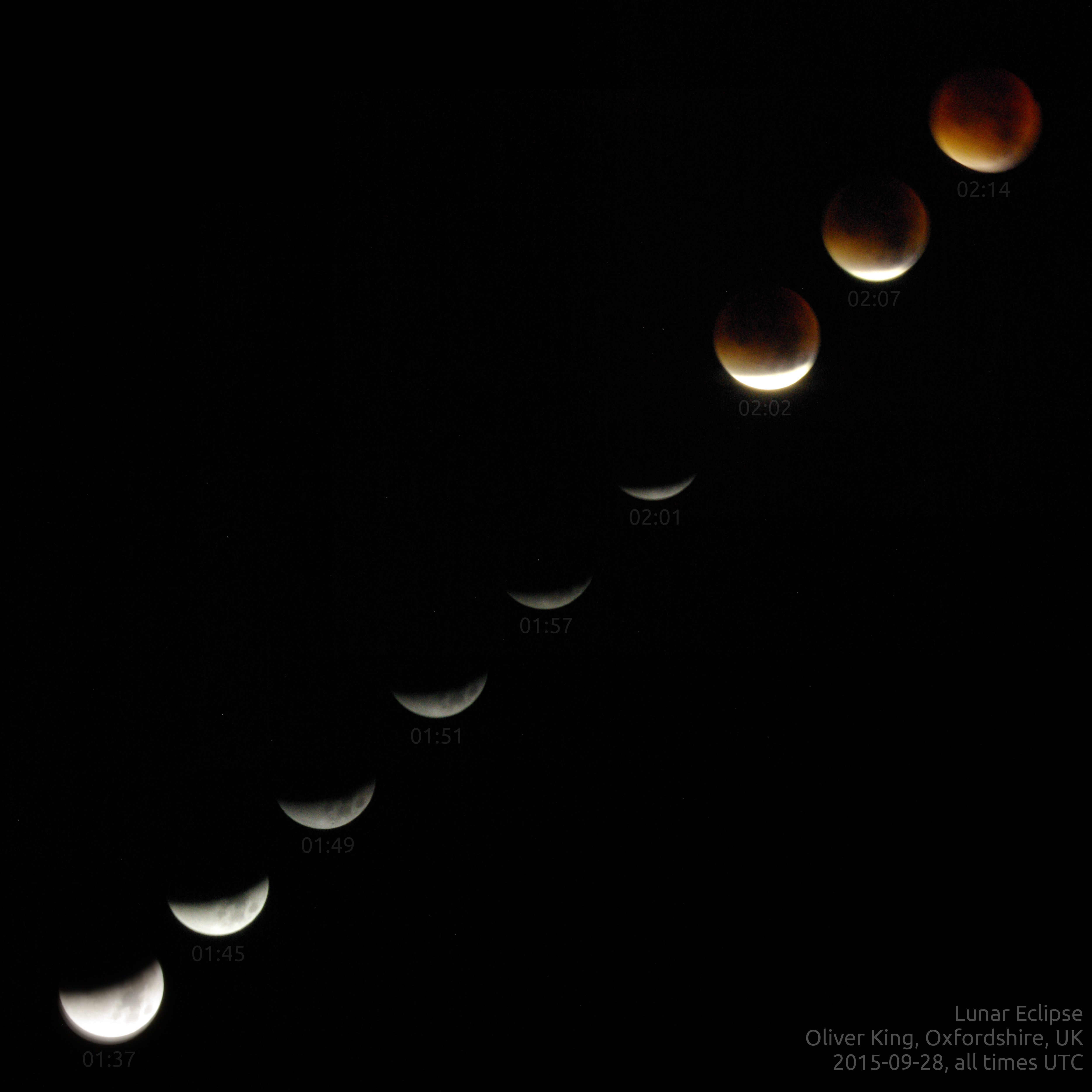September 2015 Skynotes: Lunar Eclipse
A lunar eclipse occurs when the Earth passes between the Sun and the Moon, meaning that the Moon is in the Earth’s shadow. These can cause the Moon to go red, and are easy to observe with the naked eye. Lunar Eclipses occur at a full Moon, when the Moon is on the opposite side of the Earth to the Sun. However, Lunar Eclipses do not occur every month because the Moon’s orbit is tilted 5.16° relative to the orbit of the Earth, meaning that most of the time, the Earth’s shadow passes over or under the Moon. Click here to find out more about lunar eclipses…
These images are of the total lunar eclipse on the morning of 29th September. The first image shows the moon at different points during the start of the eclipse, as the earth’s shadow moved across the face of the moon. The sequence ends as the moon completely enters the earth’s shadow, becoming red due to the refraction of the earth’s atmosphere.
The second image is a higher resolution photo of the moon during the eclipse, taken by HCO member Matt Armitage. This image clearly shows the red colour of the moon during the eclipse, as well as the surface of the moon.
Oliver King
First image (Oliver King):
Location: Oxfordshire, UK
Camera: Pentax K10D SLR with tripod (f/3.5, ISO-1600, varying exposures)
Second image (Matt Armitage):
Location: Eynsham near Oxford
Camera: Canon 1000d dslr, 500mm mirror lens on a tripod. A single 2 second exposure at ISO800
Time: 3:27am


